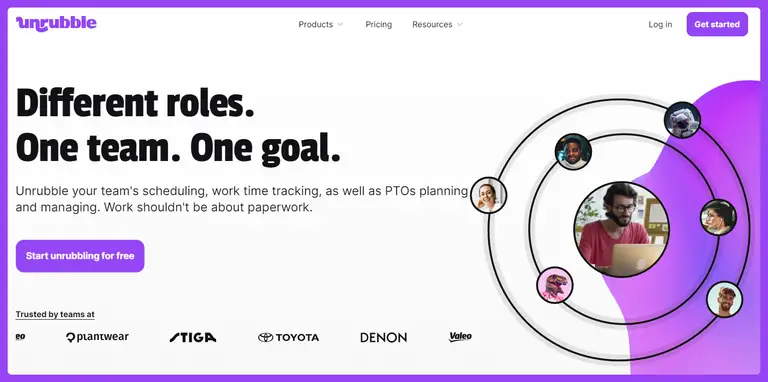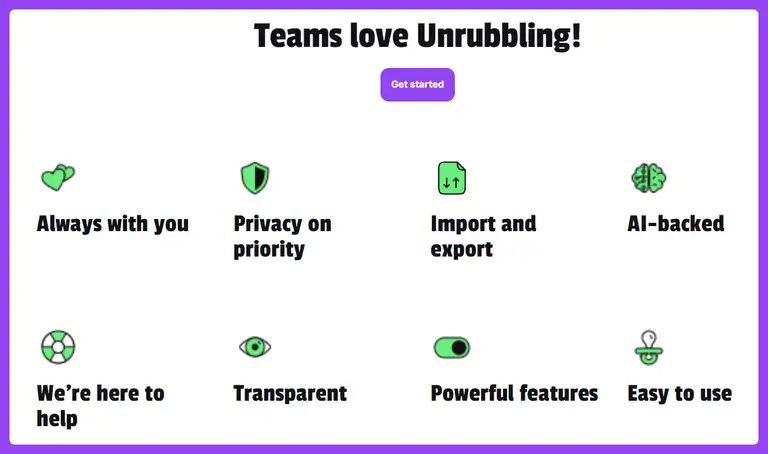Are you curious about how to organize your employees' work schedules effectively?
Well, you're in luck because, in this 2023 work schedule guide, we cover everything about shift schedules.
Whether you're an employer looking to streamline your team's working hours or simply interested in how different schedules work, this guide has got you covered.
Let's get right into it!
What is a shift schedule?
A shift schedule, also known as a work schedule or employee schedule, is a plan that outlines when employees are expected to work during a specific period, typically covering a week or month. It specifies the start and end times of each employee's shifts, as well as their designated workdays and rest days.
The pros and cons of shift schedules
These schedules are commonly used in various industries, such as retail, healthcare, manufacturing, and hospitality.
Employees operate according to a given work schedule to ensure adequate staffing and smooth operations around the clock.
With this type of style, there come certain benefits and minuses:
Pros
It's easy to cover a workload and distribute it evenly
Such schedules make it easy to cover the workload efficiently and distribute tasks evenly among employees. This way, the organization's operations run smoothly and tasks are completed on time.
It gives employees time to rest
They provide designated rest periods for employees. This lets them recharge and maintain their physical and mental well-being. The outcome is that the risk of burnout and fatigue drops significantly.
It makes it easy to comply with the law when an employee has to rest
It's easier for organizations to comply with labor laws and regulations that mandate rest periods and limit working hours. This helps make sure that employees receive their required breaks and that the company adheres to legal standards.
Cons
There could be a shift inequality
Shift schedules can sometimes lead to inequalities among employees. For instance, certain shifts may be perceived as more favorable or convenient than others, causing dissatisfaction and potential conflicts among workers.
It might be an abnormal routine for employees
Employees may find it challenging to adapt to irregular working hours, especially if they involve night shifts or rotating schedules. This can disrupt their natural rhythms, as well as lead to sleep problems and fatigue.
Poor caution
Fatigue resulting from irregular shifts can potentially lead to reduced alertness and poor concentration. Further, this increases the risk of accidents and errors in safety-sensitive industries like healthcare and manufacturing. Maintaining a high level of vigilance can be difficult for employees on certain schedules.
Types of shift work schedules - DuPont employee schedule & other

We can distinguish the following types of shift work schedules:
Fixed shifts
Employees work the same shift consistently, which can be day, evening, or night shifts. This schedule provides stability but may limit flexibility.
In a manufacturing plant, the fixed shift schedule could involve employees working the same shift consistently. For example, a day shift worker might have a set schedule of 7:00 AM to 3:00 PM, Monday through Friday. This provides stability for both the employee and the company.
Split shifts
Employees have two distinct work periods in a day, with a break in between. This schedule is common in industries with extended operating hours, like restaurants.
In a restaurant, split shifts can be common because of extended operating hours. An employee might work from 10:00 AM to 2:00 PM, have a break, and then return for the evening shift from 5:00 PM to 9:00 PM. This schedule allows the restaurant to cover both lunch and dinner rushes.
Overtime
Workers have extended hours beyond their regular shifts, often to meet increased workload demands.
In a retail store during the holiday season, employees may work overtime to handle increased customer traffic. An employee's regular shift might be 9:00 AM to 5:00 PM, but during the holiday rush, they work an extra three hours, extending their shift to 8:00 PM.
2-2-3 schedule
Employees may work for two days, have two days off, and then work three days. This pattern repeats in a cycle.
In a hospital, nurses might follow a 2-2-3 shift schedule. For example, they work for two consecutive days, have two days off, and then work three consecutive days. This cycle repeats and as such, it allows for round-the-clock coverage.
Rotating shift
Employees cycle through different shifts, such as day, evening, and night shifts. This is done over a set period, often weekly or monthly.
In a manufacturing facility, workers rotate through different shifts weekly. One week, they might work the day shift (7:00 AM - 3:00 PM), the next week, the evening shift (3:00 PM - 11:00 PM), and the following week, the night shift (11:00 PM - 7:00 AM).
24/7 shift
An employee who works 24/7 shifts is responsible for making operations run continuously and without breaks. This pattern is common for healthcare or manufacturing industries.
In a call center providing customer support worldwide, employees might be assigned to a 24/7 shift schedule. This means employees cover all hours of the day and night to assist customers in different time zones.
Graveyard shift
This late-night shift typically starts at midnight or in the early hours of the morning and ends in the morning or early afternoon.
In a security company, the graveyard shift could start at midnight and end at 8:00 AM. Security guards on this shift are responsible for patrolling premises during the late-night hours when security risks may be higher.
4-10 shift schedule
Employees work four days a week, each with ten-hour shifts. They then have three days off.
In an energy plant, employees might adopt a 4-10 shift schedule. They work four days a week, each with ten-hour shifts (e.g., 6:00 AM - 4:00 PM). This schedule allows for extended time off and reduces the total number of workdays.
9-80 shift
In this setup, employees work nine-hour shifts for nine days within a two-week period, gaining an extra day off every other week.
In a tech company, employees may follow a 9-80 shift schedule. They work nine-hour shifts for nine days within a two-week period. For instance, they work from 8:00 AM to 6:00 PM for nine consecutive days and then enjoy a three-day weekend.
DuPont shift schedule
A rotating shift schedule with 12-hour shifts, usually consists of a pattern such as 4 days on, 3 days off, 3 days on, and 4 days off.
In a petrochemical plant, employees could adopt a DuPont schedule involving 12-hour shifts. For example, they might work four days (6:00 AM - 6:00 PM), have three days off, and then work three nights (6:00 PM - 6:00 AM), followed by four days off.
Four-on, four-off shift
Employees work four consecutive days, followed by four consecutive days off. This schedule provides extended time off but requires longer work hours during shifts.
In emergency services like firefighting, a common schedule is the four-on, four-off shift. Firefighters work four consecutive days (e.g., 24-hour shifts) and then enjoy four consecutive days off, allowing for extended rest and recovery periods.
Learn how to create a shift schedule
Creating an effective shift schedule for your workforce involves several crucial steps to maintain optimal coverage and balance between work and personal life.
Here's a breakdown of the process:
Find your needs and requirements
Begin by assessing the needs of your business or organization. Consider factors like the type of work, round-the-clock operations, labor costs, and the desire to provide employees with a better work-life balance. Understanding your specific needs will guide your choice of pattern.
Choose a shift schedule
There are various shift patterns available to accommodate different scenarios. You may opt for a traditional day shift schedule, a 24-hour operation involving multiple shifts, or a three-day workweek with extended hours. One popular option is the "four teams, four-week" rotation, which provides consistent coverage and extended time off for employees.
Implement a shift plan
Once you've selected a type of schedule that aligns with your requirements, it's time to implement a shift pattern. This involves assigning specific time slots for employees to work. Remember to take into account factors like the number of hours per week each employee should work and the need for round-the-clock coverage.
Use time tracking software
To effectively manage your shift schedule, consider using time tracking software. These tools help automate the scheduling process, monitor employee hours, and track schedule changes. They also enable you to control labor costs and ensure accurate payroll.
Unrubble is the ultimate solution for seamless time tracking and efficient employee shift scheduling. Designed with simplicity in mind, Unrubble is here to revolutionize your workforce management. With almost 150,000 satisfied users from diverse teams, we understand that every business works differently. And that's why Unrubble can be tailored to your needs, not the other way around.
Our time tracking feature offers precision at its finest. Be prepared for accurate tracking of work hours, overtime, and lateness. You can say goodbye to discrepancies and manual calculations. Unrubble simplifies your scheduling process with powerful tools, real-time notifications, and a user-friendly interface.
What else can we offer?
- allow employees to manage their PTO, breaks and work times,
- use shift planning tools to plan the weekly schedule effortlessly,
- use the software from anywhere thanks to our mobile app,
- sort out business trips and payroll with ease,
and much more.
It's time to boost your efficiency with Unrubble – your ultimate workforce management solution.
Try Unrubble today, and experience the future of employee scheduling and time tracking for yourself.

Follow up with your employees and get feedback
After implementing the shift schedule, it's essential to keep open communication with your employees. Regularly check whether the schedule is meeting their needs and offering a better work-life balance. Encourage feedback and be willing to make adjustments as necessary to create a schedule that benefits both your organization and your workforce.
Conclusion
With this knowledge, you're ready to implement the best schedule type for your employees.
Remember to always carefully consider the needs of your company and employees before introducing any type of shift schedule.
P.S. To make any of the employee shift schedules of your choice work perfectly, implement our time tracking and employee scheduling software - Unrubble.







